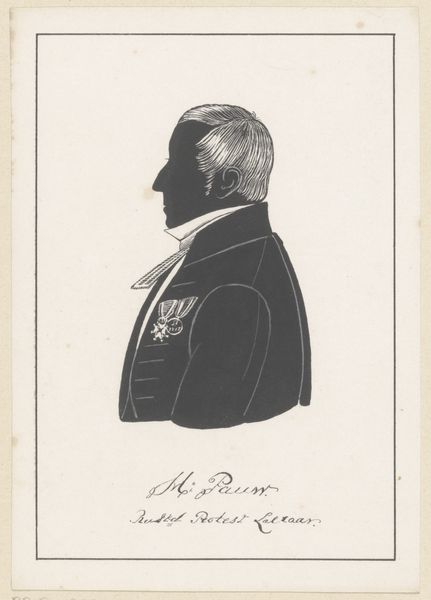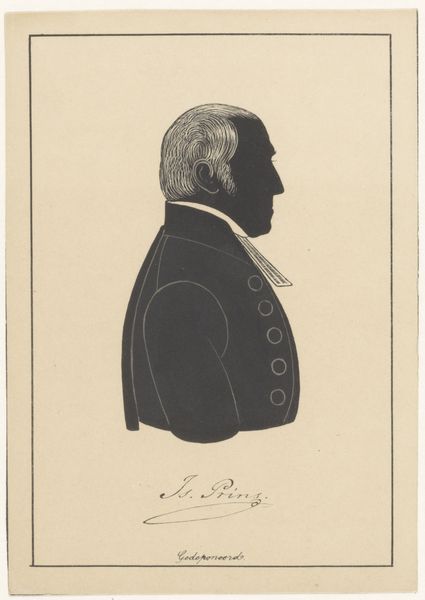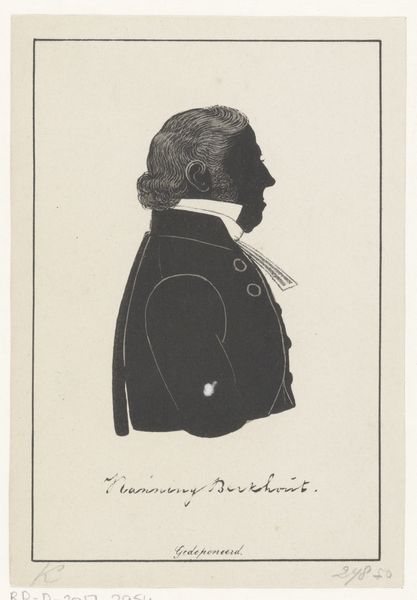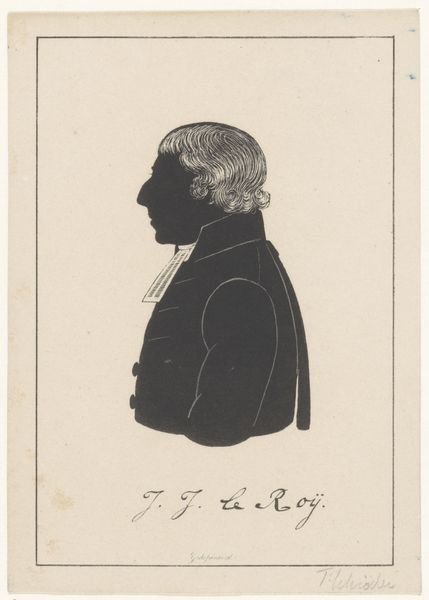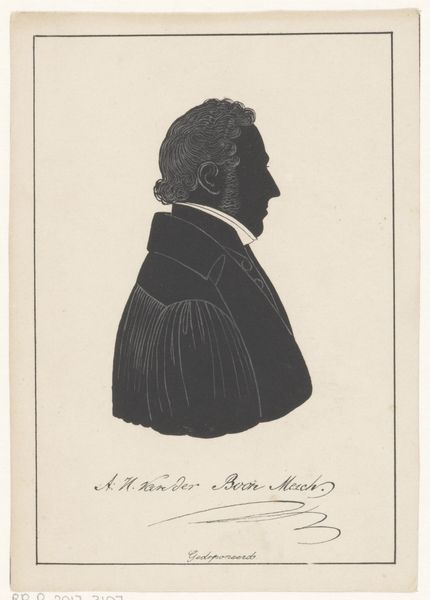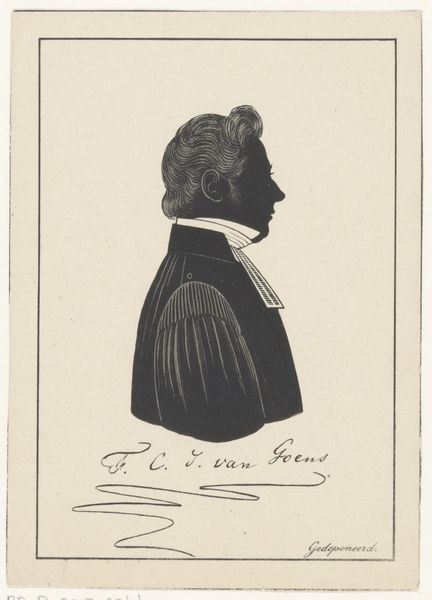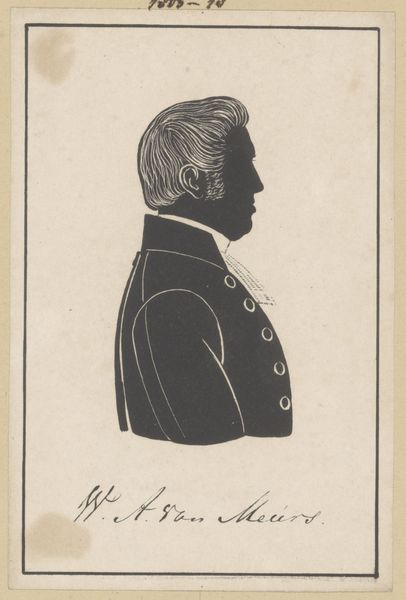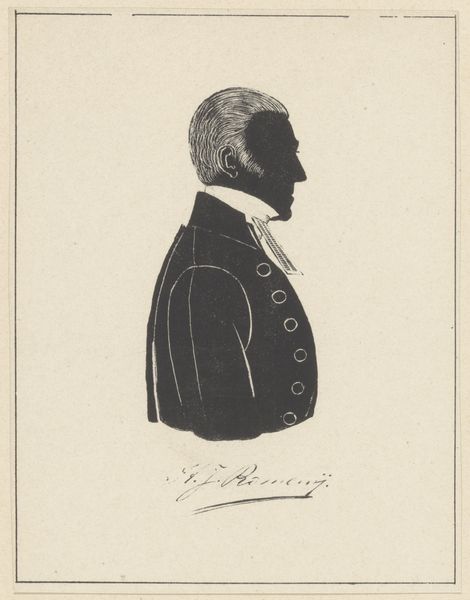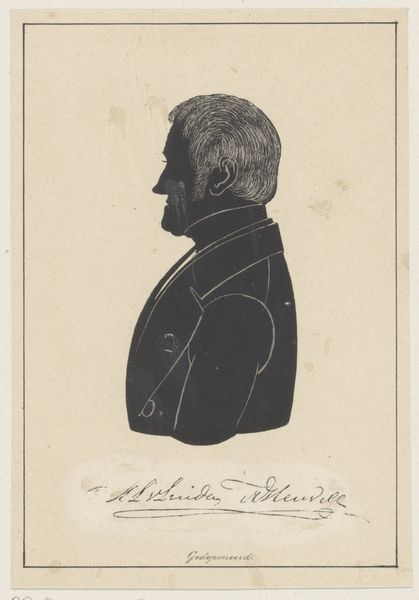
drawing, paper, graphite
#
portrait
#
drawing
#
caricature
#
paper
#
romanticism
#
graphite
Dimensions: height 148 mm, width 108 mm, height 303 mm, width 243 mm
Copyright: Rijks Museum: Open Domain
Curator: Pieter Barbiers IV, created this silhouette portrait of Jacob Stroeve at some point between 1809 and 1848. The medium is graphite on paper, a popular technique of the era. Editor: The stark contrast immediately conveys a sense of formality, even austerity. There’s an almost clinical detachment, like a preserved specimen. It gives me the uncanny impression of a man defined by absence rather than presence. Curator: I see the opposite! Look at the precision with which the hair is rendered, or the crispness of the jacket's line. Barbiers emphasizes structure, revealing a meticulously constructed representation that’s fascinating in its details. It has an analytical elegance. Editor: Elegance perhaps, but the choice to remove almost all the physiognomic details serves to depersonalize the subject. Isn't it an aesthetic choice that echoes the restrictive societal norms, where individual expression was frequently stifled? How can we reclaim individual representation when the power to represent remains firmly rooted in the hands of institutions that deny individuality? Curator: That's an intriguing interpretation. However, I argue that this method highlights the power of form. Every element is deliberate. Each line and curve creates a holistic effect that is more engaging than merely copying appearance. Observe, for instance, how the buttons balance the composition. It gives the artwork symmetry. Editor: To me, these button details are visual signifiers—subtle indicators of class and status during the post-revolutionary period in Europe. Who did this artist choose to memorialize and what biases did he hold? Those decisions are far from apolitical. Silhouette portraiture was a common technique—easily accessible, but the act of portraying elites reaffirms hierarchies. Curator: Nonetheless, the skill in simplifying an entire person into merely outlines should be valued for what it says aesthetically, while not dismissing your very valid sociohistorical argument. Editor: Right! We must question everything; art gives us these rare opportunities. Curator: Yes, a fitting note on which to conclude, don't you think? Editor: Indeed.
Comments
No comments
Be the first to comment and join the conversation on the ultimate creative platform.
